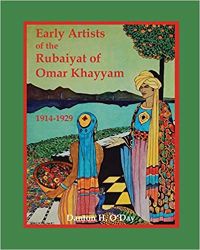The silk road of poetry: Omar Khayyam and Edward FitzGerald. David Mason.
In: Voices, places : essays. David Mason. Philadelphia, Paul Dry Books, 2018. 210 pp. ISBN: 9781589881235. – p. 33-40
Summary:
Poet David Mason explores surprising connections in geography and time, considering writers who travelled, who emigrated or were exiled, and who often shaped the literature of their homelands. He writes of seasoned travellers (Patrick Leigh Fermor, Bruce Chatwin, Joseph Conrad, Herodotus himself), and writers as far flung as Omar Khayyam, Jamal al-Din al-Afghani, James Joyce, and Les Murray.
